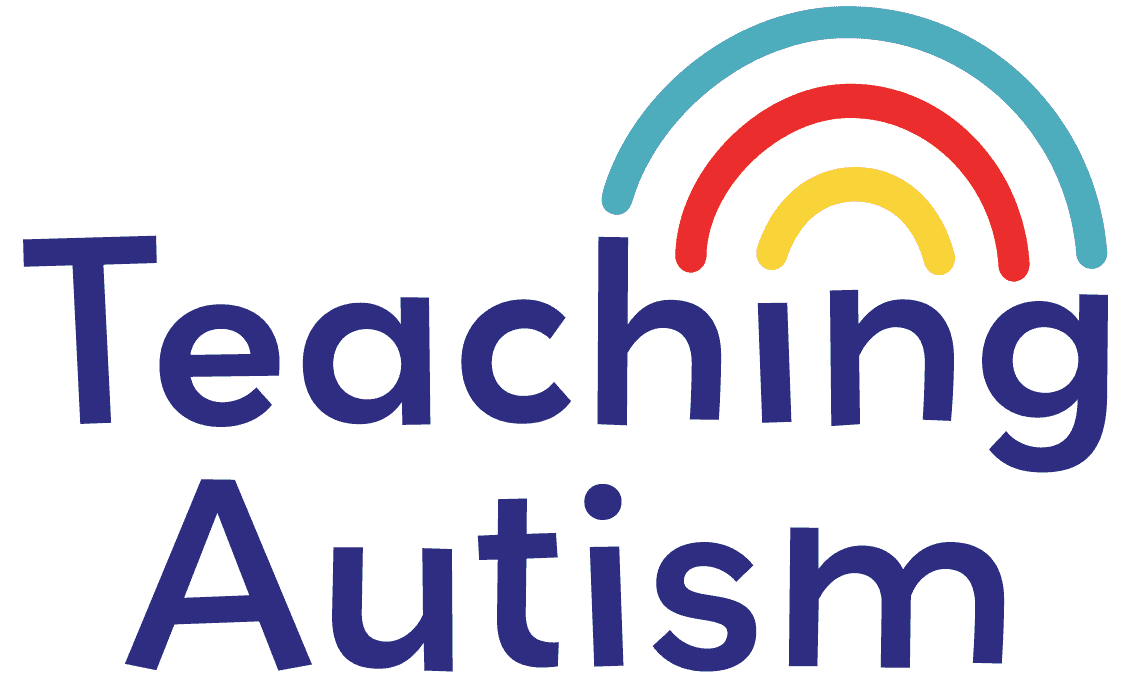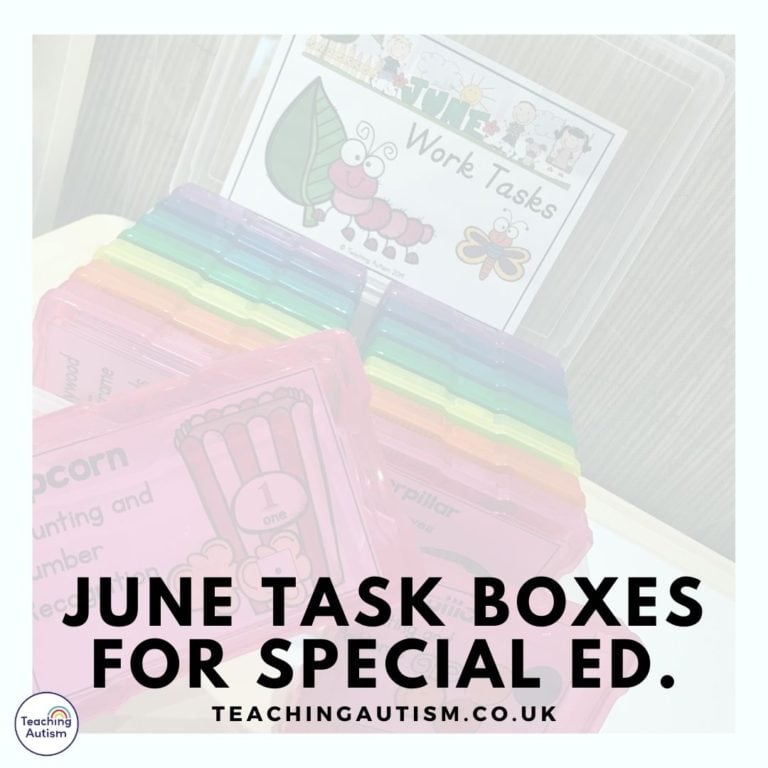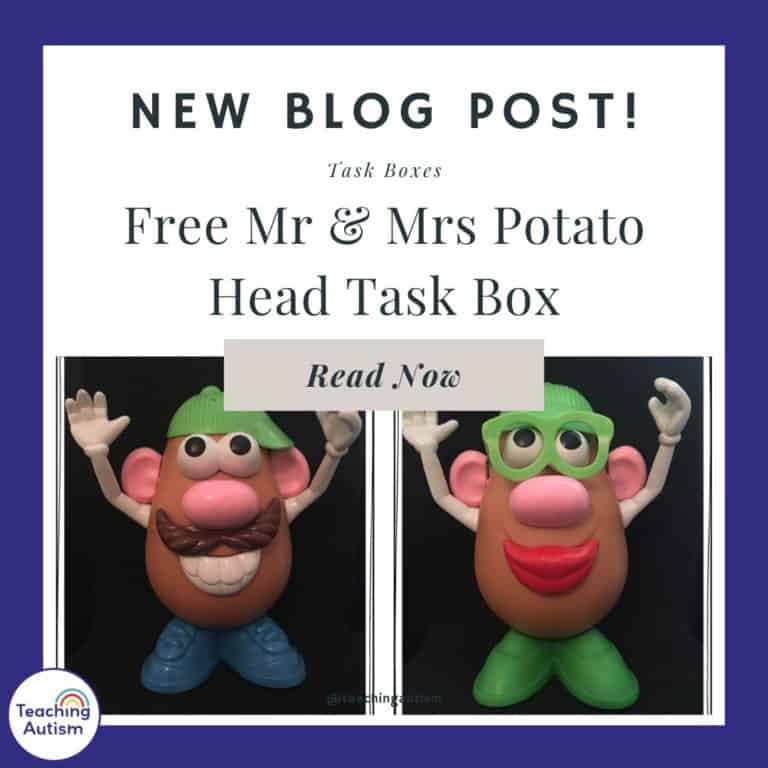Debunking 5 Myths About Task Boxes
Debunking 5 myths about task boxes is something I’ve been meaning to do for ages.. Because let’s be honest, there’s a LOT of misinformation out there. Whether you’re brand new to task boxes or already have a shelf full of them, you’ve probably heard a few of these myths whispered around the staffroom. So let’s set the record straight and give task boxes the credit they actually deserve.
I can’t even tell you how many times I’ve heard myths about task boxes floating around teacher chats, Facebook groups, or whispered in staff rooms like we’re in some kind of task-box conspiracy club.
So today, I’m spilling the tea, and busting 5 common myths about task boxes that might be holding you (and your students!) back from fully embracing their magic.
By the end of this post, you’ll either be shouting “I KNEW IT!” or sprinting to join my Task Box Library where over 1,100+ ready-to-go task boxes are waiting for you like the organized little legends they are.
Let’s dive in.
Myth #1: “Task Boxes Are Only for Independent Work Time”
Okay, let’s clear this one up fast.
Yes, task boxes are brilliant for independent work. That’s one of the OG reasons they’re so popular. But that’s not all they’re good for.
I use task boxes for:
- Warm-up activities when students walk into the room and we’re not quite ready to launch into the big stuff yet.
- Early finishers (because we all have that one student who finishes everything in five minutes and stares at you like… “now what?”)
- Small group rotations so paras or support staff have ready-to-go materials at their fingertips.
- Speech therapy sessions, OT support, life skills practice – you name it, there’s a task box for it.
Seriously, my Task Box Library is like the Swiss Army knife of special ed. You’ll find fine motor tasks, math, literacy, social skills, life skills, and even seasonal fun, all ready to grab and go.
So no, they’re not just for independent time, they’re for any time you want learning to be engaging, structured, and hands-on without the prep stress.
Myth #2: “Task Boxes Take Too Much Time to Prep”
Ohhhh, the irony.
One of the main reasons task boxes became my ride-or-die classroom tool is because they actually save me time.
Here’s the truth: yes, there’s a little prep involved at the beginning. You print, cut, laminate, maybe add some velcro and if you’re feeling fancy (or just slide it into a pouch if you’re feeling realistic), pop it in a container, and boom. You now have a reusable resource that you can use again and again and again.
And if you’re inside my Task Box Library, I’ve taken even more of the prep off your plate. You can filter by theme, skill, subject, or holiday and find exactly what you need, then just download and go.
Want cutting tasks? Got ‘em.
Sorting by color, size, or category? Yep.
Money, hygiene, emotions, writing, matching, reading, WH questions? You already know.
Plus, once you build up a collection (or just swipe mine from the Task Box Library), you’ll wonder how you ever lived without them. It’s like having a backup teacher assistant living in a plastic box.
Myth #3: “Task Boxes Are Too ‘Babyish’ for Older Students”
This one gets a big “nope” from me.
I work with older students, too, and let me tell you, it’s all about how you frame and design them.
Task boxes are incredibly easy to differentiate. You can adapt the visuals, increase the complexity, or use more mature themes. In my Task Box Library, you’ll find resources designed for a wide age range, from early learners all the way up to teens working on life and functional skills.
Older students still need:
- Visual supports
- Hands-on learning
- Short, structured tasks
- Confidence-boosting activities
We just make sure it’s age-respectful. And honestly, most of my teens prefer task boxes because they give them that quick sense of accomplishment (and let’s be real, we all love that).
So no, task boxes aren’t “babyish.” They’re brilliant.
Myth #4: “You Need a Fancy Storage System to Make It Work”
Listen, I love a good color-coded, photo-labeled, rolling-drawer-cart system as much as the next Pinterest-loving teacher. But let me be very clear here:
You do not need to be a Pinterest queen to use task boxes.
Some of my task boxes are stored in:
- Ziplock bags
- Old lunch boxes
- Ikea bins
- Random plastic drawers I “borrowed” from home (and never returned)
The magic isn’t in the storage, it’s in the system.
I created the Task Box Library so you can stop searching the internet for what to make next and instead spend your time actually using the resources you have.
If all you’ve got is a dollar store basket and a label made with a Sharpie, you’re good. Let’s not overcomplicate it.
Myth #5: “Students Will Get Bored of Task Boxes”
Nope. Not if you rotate them smartly and keep them fresh.
Here’s the trick: build a solid base collection of core task boxes, like matching, counting, sorting, labeling, and sequencing, and then sprinkle in seasonal or themed ones to keep things fun.
That’s literally how I designed the Task Box Library. You can dip in and grab Halloween boxes in October, Ice Cream and Lemonade tasks in June, or shark-themed fine motor fun for a summer send-off.
Switching things out keeps it exciting for your students and for you. You’re not stuck doing the same ‘ol stuff every week.
And because task boxes are quick to complete, students don’t have time to get bored. They get that little boost of “Yes! I did it!” and then move on.
Final Thoughts: Let’s Retire These Myths, Yeah?
Task boxes are not a trend or a fad, they’re a lifeline for special ed teachers who want to create structured, supportive, and success-filled classrooms without burning out in the process.
Whether you’re brand new to task boxes or you’re swimming in a sea of Velcro, I promise you, there’s always more magic to discover. And if you’re ready to make task boxes your classroom BFF, come check out the Task Box Library. With over 1,100 pre-made boxes (plus trainings, assessments, and themed sets), it’s basically a treasure chest for tired teachers.
You deserve ease. You deserve support. You deserve to stop cutting out bananas at midnight while questioning your life choices. Task boxes can help.
Let’s keep busting myths and building classrooms that actually work, for you and your amazing students.
If you found this ‘Debunking 5 Myths About Task Boxes’ blog post helpful, please consider sharing it with your friends and colleagues on social media.
Helpful Links
You may also be interested in;
- How to Pair Task Boxes with IEP Goals
- Special Education Task Box Library
- Task Boxes vs Centers
- 5 Benefits of Using Task Boxes

P.S. Have you signed up for my VIP membership yet? If not, head on over and sign up now. You’ll get access to hundreds and hundreds of resources, templates, crafts and more being uploaded every month!
Nikki








One Comment